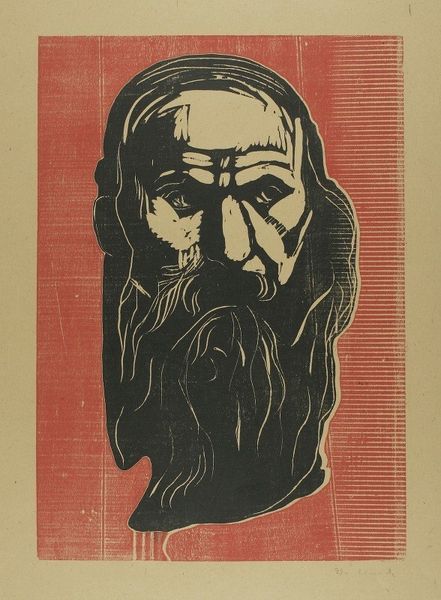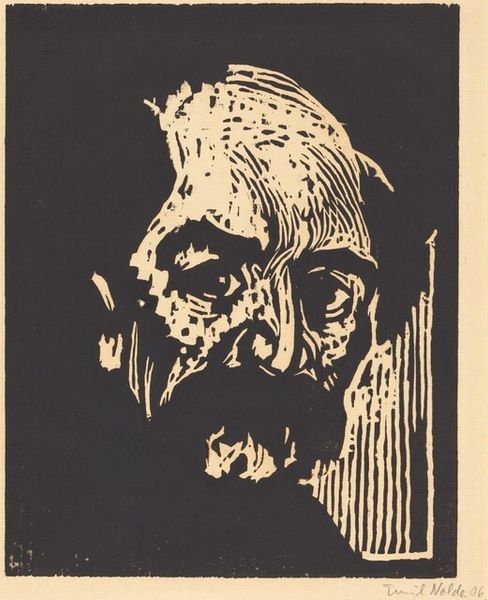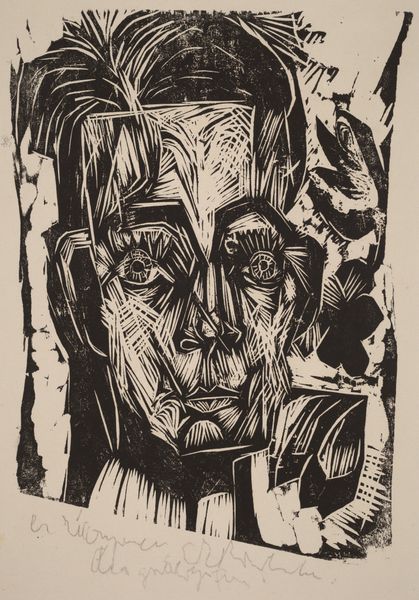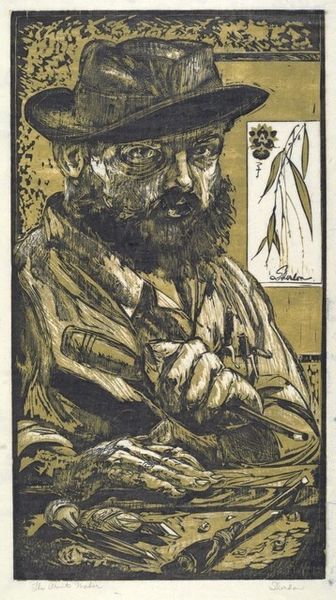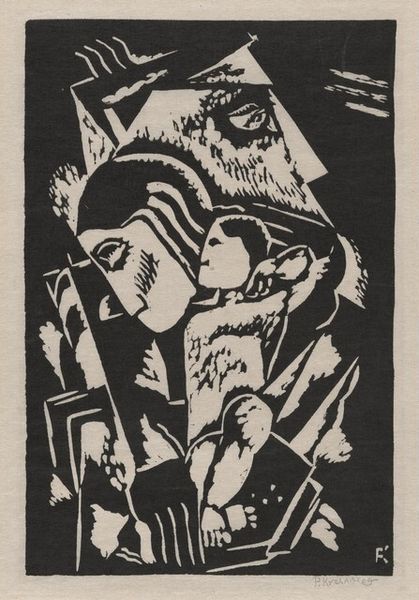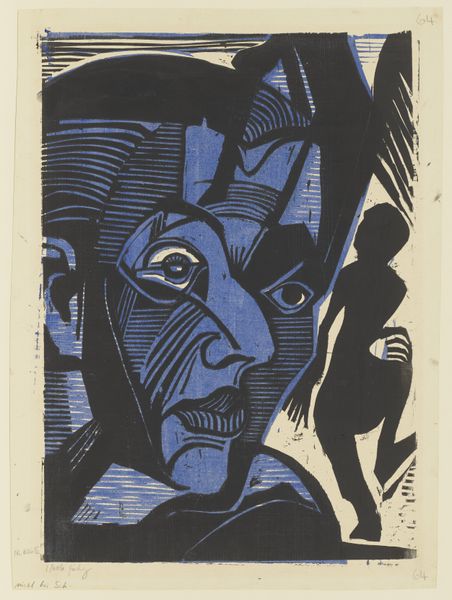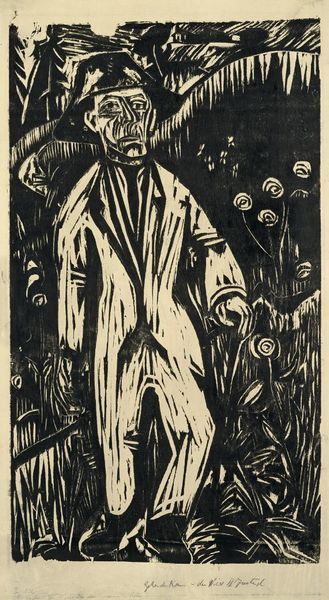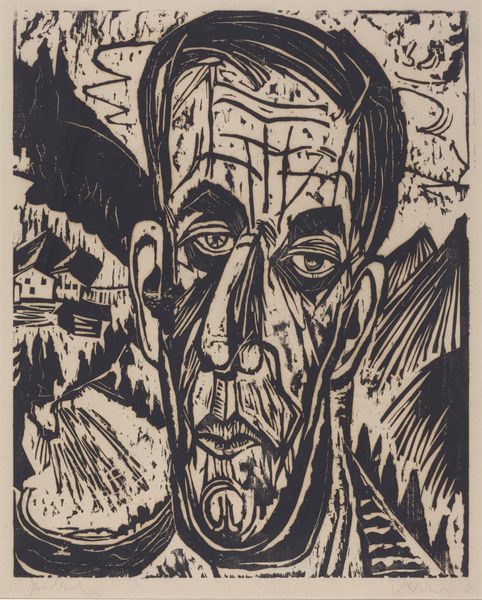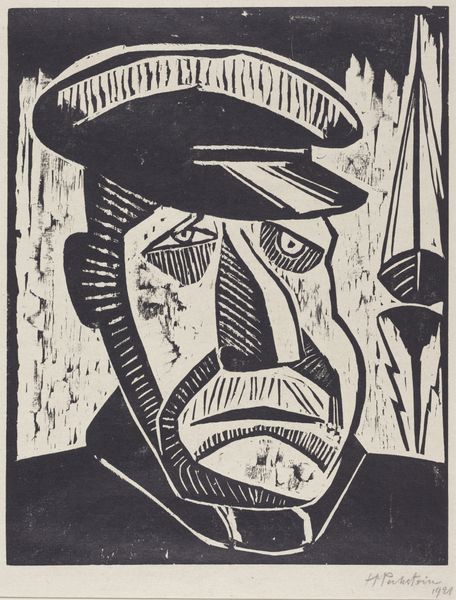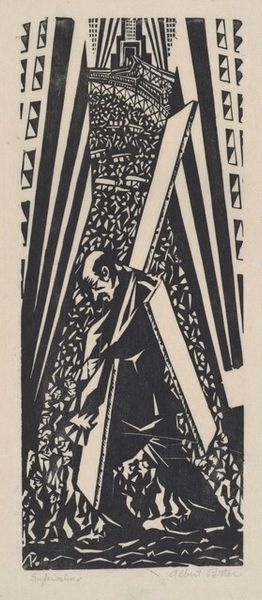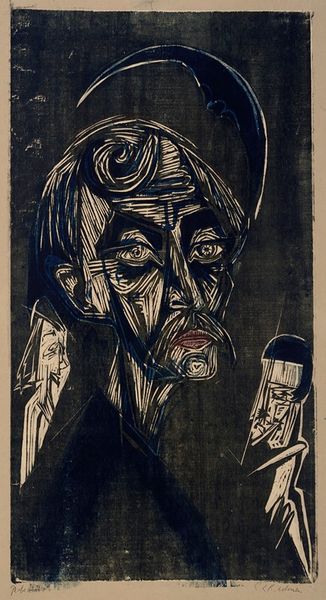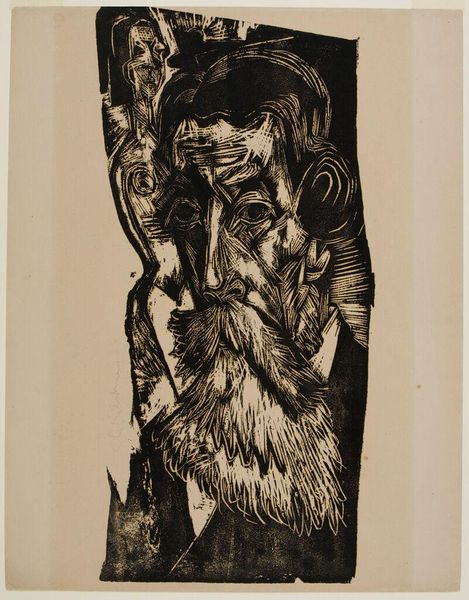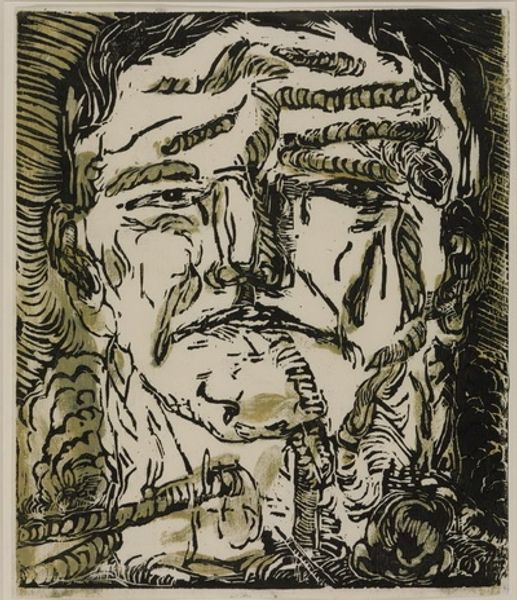
print, woodcut
#
portrait
# print
#
german-expressionism
#
figuration
#
expressionism
#
woodcut
#
line
#
monochrome
Copyright: Public domain US
Curator: Before us is Max Pechstein's "Head of a Fisherman," a woodcut created in 1921. Editor: It's striking! The severe angularity of the features, the stark black and white...it conveys a certain hardship and stoicism. There's a roughness here that feels incredibly raw. Curator: Precisely. Pechstein was a key figure in German Expressionism, a movement deeply concerned with portraying subjective experience and societal anxieties. The choice of a fisherman is not accidental; it taps into the romanticized ideal of the working class, grounding the work in the realities of labor. Editor: And the abstraction... look at how he's broken down the face into geometric shapes. The eyes are particularly compelling, those dark pupils staring straight out as if scrutinizing the viewer. It makes me consider semiotics and what meaning emerges from the basic elements. The dark and light sections serve as signs contributing to the symbolic portrayal of an everyman. Curator: The woodcut medium itself reinforces that sense of starkness. The rough texture speaks to a very specific historical moment: Germany reeling from the First World War, social unrest simmering just below the surface. Expressionism became a tool of protest. Do you see echoes of the era's tumultuous gender politics as well, Editor? The man is self-possessed and resolute. Editor: Absolutely. It could also signify a break from the soft portraiture that existed before and open doors for further expressions and perspectives of gender. Regardless of this possible nod toward progressive ideas on gender and the everyman identity in times of chaos, the overall aesthetic makes him appear larger than life. I almost sense the influence of Primitivism...a desire to connect with something elemental, perhaps? Curator: I think so. The formal elements undeniably lend themselves to larger narratives about social justice and human experience. These radical portraits became rallying cries. Editor: Ultimately, this woodcut showcases the expressive possibilities inherent within very limited means. The striking simplification really distills this image to its emotional core. Curator: Agreed. Pechstein's work serves as a reminder of the potent intersections of art, identity, and the sociopolitical sphere.
Comments
No comments
Be the first to comment and join the conversation on the ultimate creative platform.
